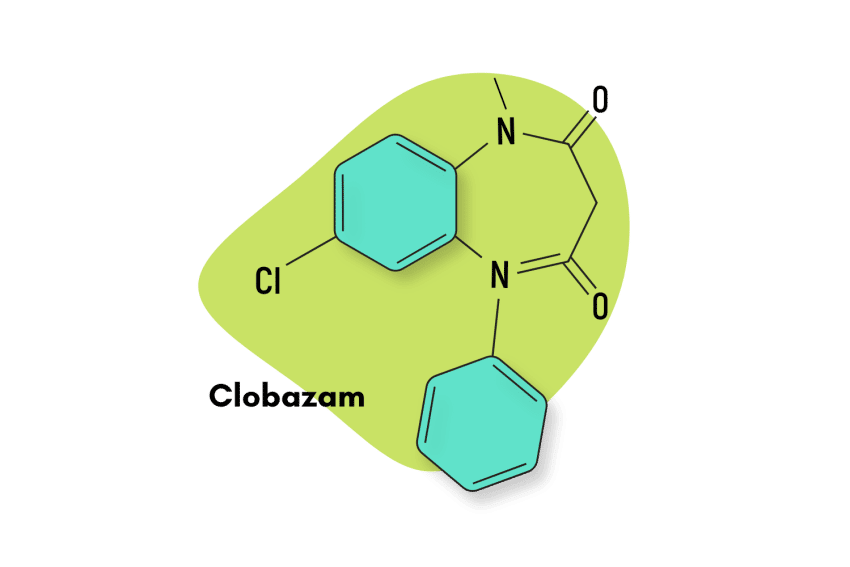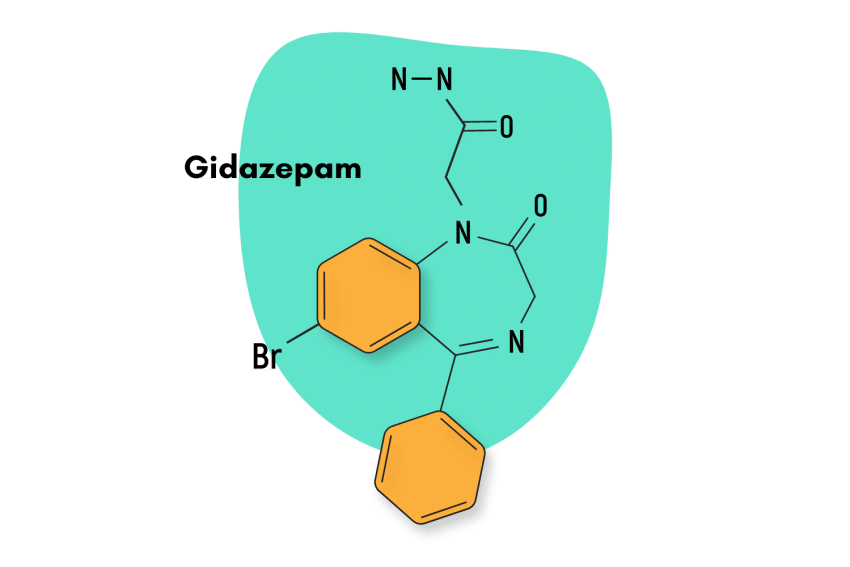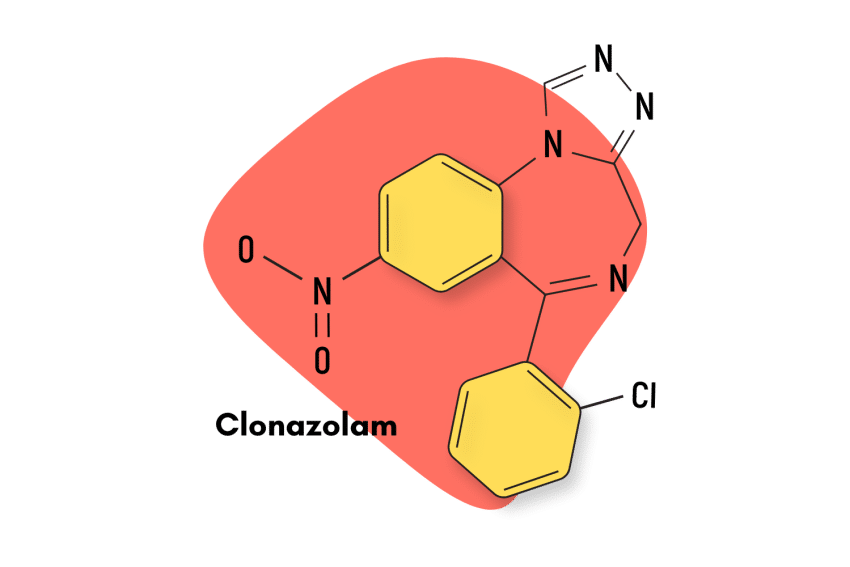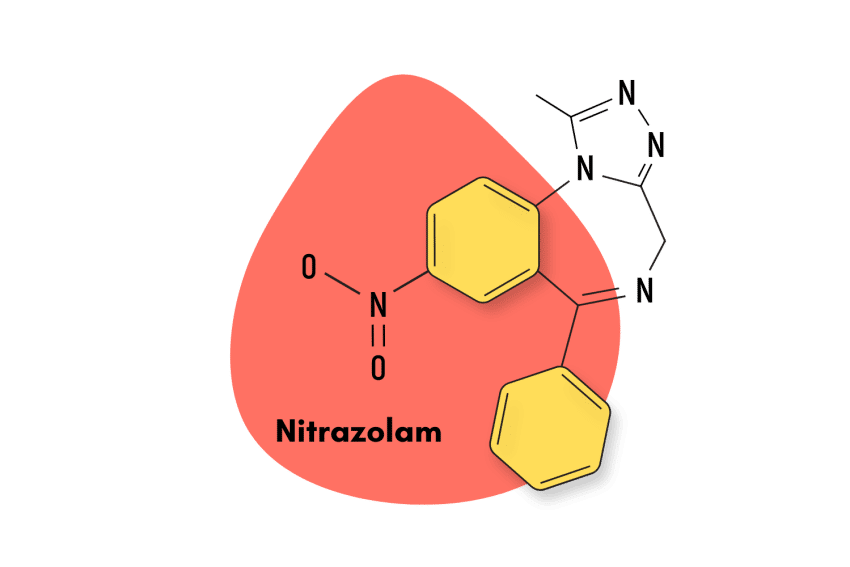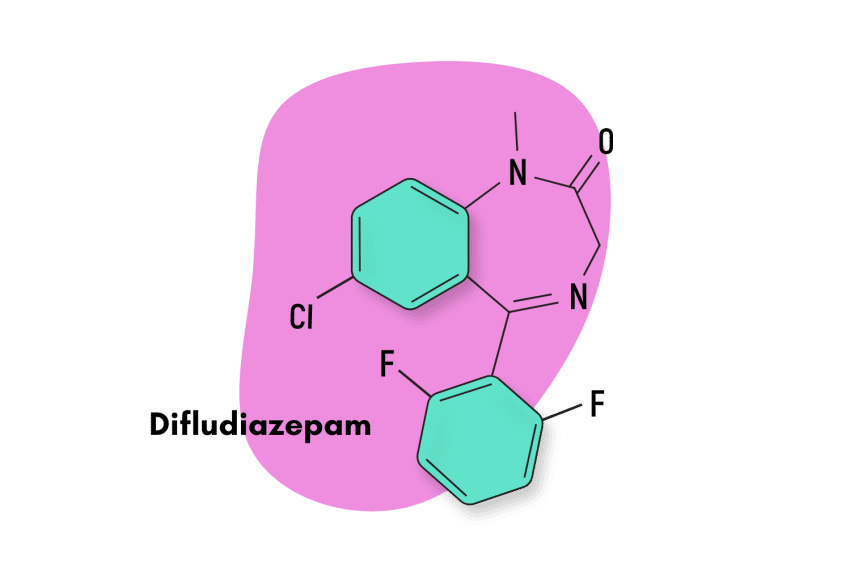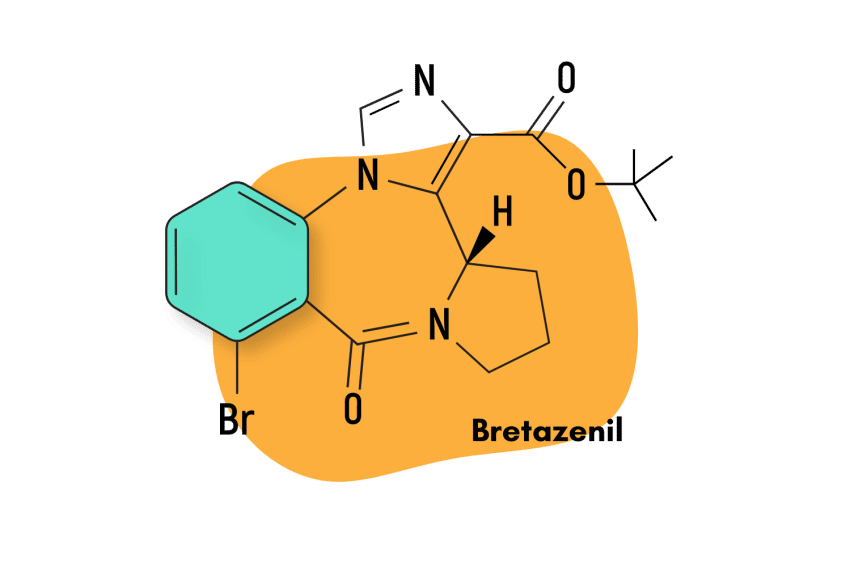Flubromazolam (AKA ‘Liquid Xanax’): Is This The Most Dangerous Benzodiazepine?
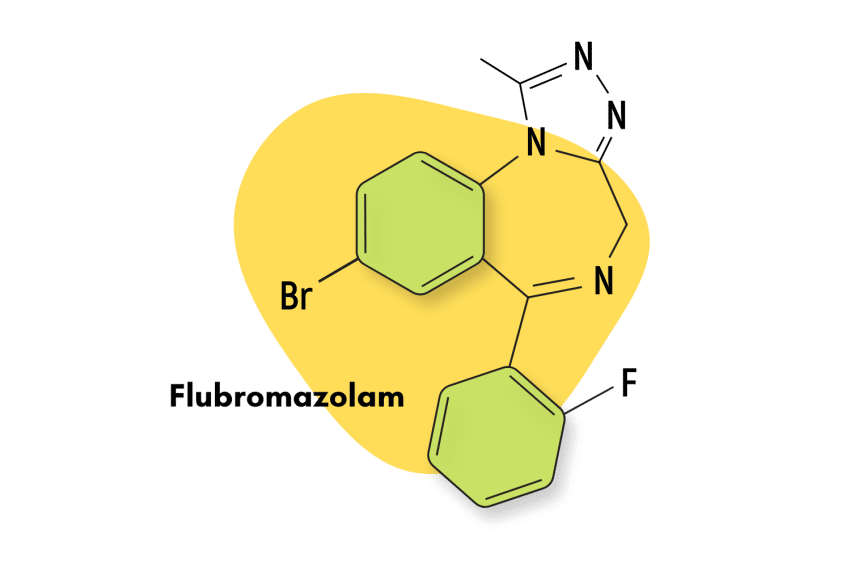
Flubromazolam, also known as “liquid Xanax” or JYI-73, is a triazolobenzodiazepine (TBZDs) analog of the designer benzodiazepine, flubromazepam.
The TBZD class of benzos is known for its elevated potencies and its strong emphasis on antidepressant properties.
Among all the dozens of benzodiazepines in existence, flubromazolam stands out by being the most powerful benzodiazepine in existence. This, of course, also makes flubromazolam an extremely dangerous compound.
Flubromazolam is so potent that a mere 0.2 mg dose is equivalent to a 10 mg dose of diazepam. It can be lethal in doses as low as 3 mg [1].
Flubromazolam does not have any accepted medical uses in the United States. Because of this, it is only available through unregulated online retailers and is primarily used as a recreational drug.
Flubromazolam Specs
| Status | Research Chemical |
| Common Dosage | 0.2-0.4 mg |
| PubChem ID | 21930924 |
| CAS# | 61256-40-6 |
IUPAC Name
8-Bromo-6-(2-fluorophenyl)-1-methyl-4H-[1,2,4]triazolo[4,3-a][1,4]benzodiazepine
Other Names
Liquid Xanax, JYI-73
Metabolism
The metabolism of flubromazolam is hepatic and is at least partially mediated by the CYP3A4/5 and UGT1A4 enzymes [2], which implies that enzyme polymorphisms may influence the excretion and pharmacological effects of the compound.
Furthermore, flubromazolam’s primary metabolites are formed predominantly by hydroxylation, dihydroxylation, and O-glucuronidation, including α-hydroxy-flubromazolam (the most abundant metabolite), 4-hydroxy-flubromazolam, flubromazolam N-glucuronide, α-hydroxy-flubromazolam glucuronide, and 4-hydroxy-flubromazolam glucuronide.
Duration of Effects
Flubromazolam has an estimated terminal elimination half-life of 10–20 hours [2].
Benzodiazepine Dosage Equivalency Calculator
**Caution:** Benzodiazepines have a narrow therapeutic window. Dose equivalents may not be accurate in higher doses.
This calculator does not substitute for clinical experience and is meant to serve only as a reference for determining oral benzodiazepine equivalence.
Please consult a medical practitioner before taking benzodiazepines.
How Does Flubromazolam Work?
Flubromazolam exerts its pharmacological effects via the benzodiazepine receptor site located on GABA neurotransmitters in the brain and central nervous system (CNS). When benzodiazepines bind to these receptor sites, they increase the effects of GABA.
Simply stated, benzodiazepines slow down neuronal activity — causing sedation, disinhibition, muscle relaxation, and a release of anxiety.
The onset of action after ingestion is approximately 20 to 45 minutes. Self-assessment reports claim that the average duration of effects is three to six hours, while the after-effects may last from one to 14 hours [3].
In terms of effects, flubromazolam produces a wide range of benzodiazepine-related effects. It has anxiolytic, disinhibiting, sedative, muscle relaxant, and memory-suppressing actions. Part of flubromazolam’s exceptional potency is likely due to its extremely high affinity for GABA receptors.

Flubromazolam Pharmacokinetics
Research has shown that a single 0.5 mg flubromazolam dose induced strong sedative effects that lasted more than 10 hours and partial amnesia over more than 24 hours.
Studies have also identified an interesting particularity of flubromazolam. With the same 0.5 mg doses, researchers observed that flubromazolam has two peak serum concentrations. The first one was reached approximately 5 hours (7.4 ng/mL) after administration [2].
Is Flubromazolam Safe? Risks & Side Effects
Most benzodiazepines are similar to each other in terms of their inherent levels of risk. There are still meaningful differences between them, mainly relating to factors such as potency, elimination half-life, how they interact with GABA receptors (partial or full agonists), etc. With that said, all benzodiazepines share the same Schedule IV classification under the Controlled Substances Act.
However, the situation is different when it comes to flubromazolam. The extreme potency of this compound means that the potential for severe health events is much more prevalent than with other benzodiazepines. As such, flubromazolam is not an approved medication in the United States or the wider world.
But people still manage to get their hands on flubromazolam and other restricted benzos. Medical authorities have detected flubromazolam use in countries like Australia, Denmark, Norway, Poland, Sweden, the USA, and Wales. Luckily though, from what data is available, it does not seem that flubromazolam is especially prevalent. For instance, the USA National Poisons Data System reported 13 cases of single-agent flubromazolam poisoning in 2016 and 2017. It is, therefore, less common in single-agent poisonings than etizolam, for example, which saw 106 cases over the same period [2].
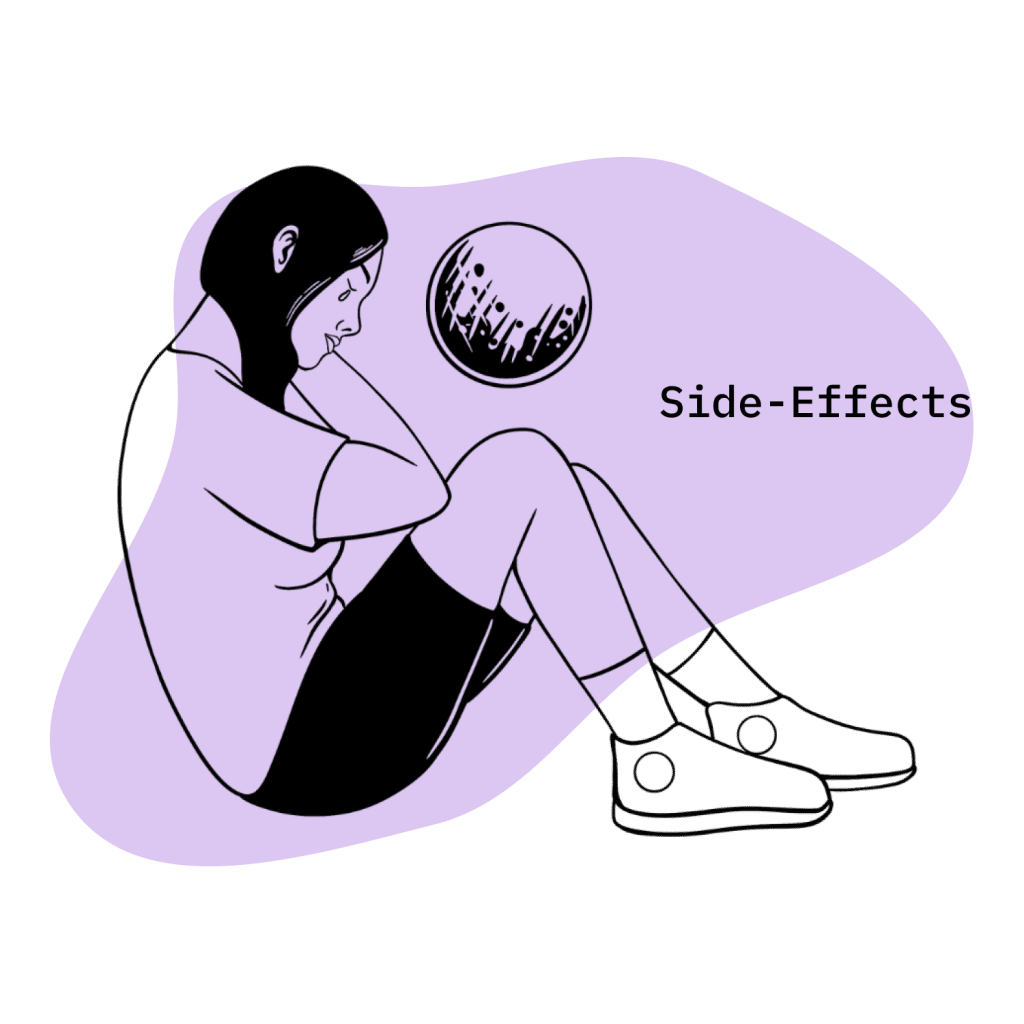
Side Effects of Flubromazolam
Since flubromazolam is not an approved medication, there are not many clinical studies that attempt to evaluate its side effects profile. Most of the literature is based on reviewing forum posts on websites where recreational users go to describe their experiences with different types of drugs.
In these studies, it was found that flubromazolam was capable of causing a wide array of adverse effects, from mildly annoying to severely disabling. Among the most severe side effects reported were: severe substantial short-term memory loss, high degree of cognitive impairment, trouble while writing, talking, and walking, sleep paralysis, and other sleep-related affectations [4].
Furthermore, the DEA has warned potential users of flubromazolam of some of the effects of overdosing: severe intoxication associated with coma, hypotension, and rhabdomyolysis (a breakdown of muscle tissue leading to the release of dangerous protein into the bloodstream).
Alongside the severe affectations, users also commonly report the more traditional benzodiazepine-related side effects such as drowsiness, light-headedness, confusion, unsteadiness, dizziness, slurred speech, muscle weakness, memory problems, constipation, nausea, dry mouth, blurred vision [4].
The study mentioned above concluded that flubromazolam appears to be a highly addictive and precarious benzodiazepine with many, possibly severe, side effects. The substance is generally described as very potent and long-lasting. Memory loss and loss of control are common adverse effects, and withdrawals are severe for many users [4].
Benzodiazepine Withdrawal & Dependence
The ability of benzodiazepines to engender symptoms of physical dependence in users is a well-established fact. Almost all typical benzodiazepine share this trait, and it’s one of the major concerns doctors have to deal with when prescribing these medications.
However, there is a substantial difference between benzos when it comes to their dependence liability. Some benzos are known to be much milder than others in this regard. For example, partial agonist benzodiazepines like cinazepam and arfendazam are less adept at causing dependence than full receptor agonists.
Benzodiazepines with high dependence liability are usually those with higher potencies. This checks out in the case of flubromazolam, as self-assessment reports for flubromazolam consistently conclude that the drug presents a high dependence risk.
Studies that have examined these types of reports found that most users agreed on the rapid onset of tolerance effects of flubromazolam [4]. Some reported multiplying the dose after just a week’s use by even as much as 30 times the original dose to achieve the desired effects. However, this seemed more the case for those users whose main purpose was to get “high” and are, therefore, more likely to use high doses. “Self-medicating” users would typically retain the same low dosage over long periods to facilitate sleeping or handle anxiety.
If compared to other high-potency benzodiazepines, it is likely that flubromazolam can begin to create dependence symptoms in users in as little as seven to 10 days of consecutive use.

Harm Reduction: Flubromazolam
When dealing with potent pharmacological compounds, users need to have harm-reduction techniques at their disposal, especially with flubromazolam. Since flubromazolam is not an approved medication, this section will focus on harm-reduction strategies for recreational users or those attempting to self-medicate.
For recreational users, the best strategies are those geared toward reducing the likelihood of an acute overdose. In this sense, it is always recommendable to partition your intended dose into two halves. Once the first part is taken and the effects have kicked in, users should decide if they want to ingest the other half, or even better, half of that portion (¼ of the total). This strategy is an easy way for users to avoid ingesting too much of a given compound, which is usually what happens in cases of recreational intoxication.
The other important recommendation is to try and avoid mixing potent pharmacological compounds, as this increases risk levels. And remember: even though it’s not prescription and it’s not illegal, alcohol is still a very potent drug.
Users often mix compounds with the goal of “offsetting” and “balancing” the effects of another drug.
There are also practical recommendations not related to the actual use of drugs that can lead to saving lives. For example, having a friend nearby who can call for medical help if something goes wrong.
Benzodiazepine Harm Reduction Tips
- 🥣 Don’t mix — Mixing benzodiazepines with other depressants (alcohol, GHB, phenibut, barbiturates, opiates) can be fatal.
- ⏳ Take frequent breaks or plan for a short treatment span — Benzodiazepines can form dependence quickly, so it’s important to stop using the drug periodically.
- 🥄 Always stick to the proper dose — The dosage of benzos can vary substantially. Some drugs require 20 or 30 mg; others can be fatal in doses as low as 3 mg.
- 💊 Be aware of contraindications — Benzodiazepines are significantly more dangerous in older people or those with certain medical conditions.
- 🧪 Test your drugs — If ordering benzos from unregistered vendors (online or street vendors), order a benzo test kit to ensure your pills contain what you think they do.
- 💉 Never snort or inject benzos — Not only does this provide no advantage, but it’s also extremely dangerous. Benzos should be taken orally.
- 🌧 Recognize the signs of addiction — Early warning signs are feeling like you’re not “yourself” without the drug or hiding your habits from loved ones.
- ⚖️ Understand the laws where you live — In most parts of the world, benzodiazepines are only considered legal if given a prescription by a medical doctor.
- 📞 Know where to go if you need help — Help is available for benzodiazepine addiction; you just have to ask for it. Look up “addiction hotline” for more information about where you live. (USA: 1-800-662-4357; Canada: 1-866-585-0445; UK: 0300-999-1212).
Flubromazolam Drug Interactions
Benzodiazepine users should steer clear of other CNS-depressant compounds. The combined effect of mixing two compounds that depress the CNS puts the user at increased risk of side effects and intoxication, as well as severe respiratory depression, which is the leading cause of death among drug overdoses.

Flubromazolam Contraindications
All benzodiazepines share the same set of contraindications:
- Bronchitis
- Chronic obstructive pulmonary disease (COPD)
- Conjunctive use of barbiturates, opiates, or those suffering from alcoholism
- Intellectual disabilities due to frequent paradoxical reactions
- Major depression
- Myasthenia gravis
- Over the age of 65 (high risk)
- Personality disorders
- Sleep apnea
Similar Benzodiazepines
There are a couple of closely related or similar benzodiazepines related to flubromazolam.
Etizolam
Etizolam is another highly potent TBZD with a fair amount of popularity as a designer drug. Both compounds are believed to be pharmacologically comparable in terms of their effects profile — albeit flubromazolam is more potent overall.
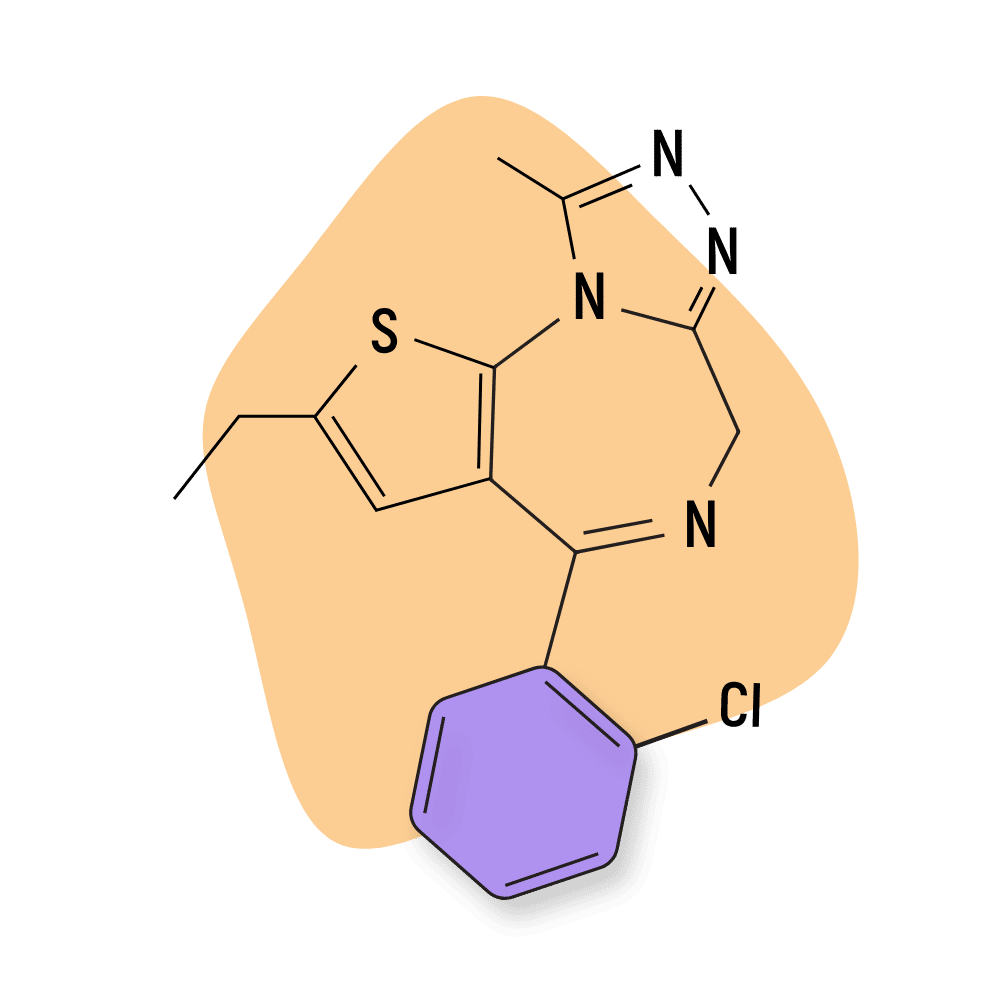
Alprazolam
Triazolobenzodiazepines are, as a group, mostly analogs, homologs, or metabolites of alprazolam (Xanax). This includes flubromazolam, which is part of the reason why this drug is often referred to as “Liquid Xanax.”
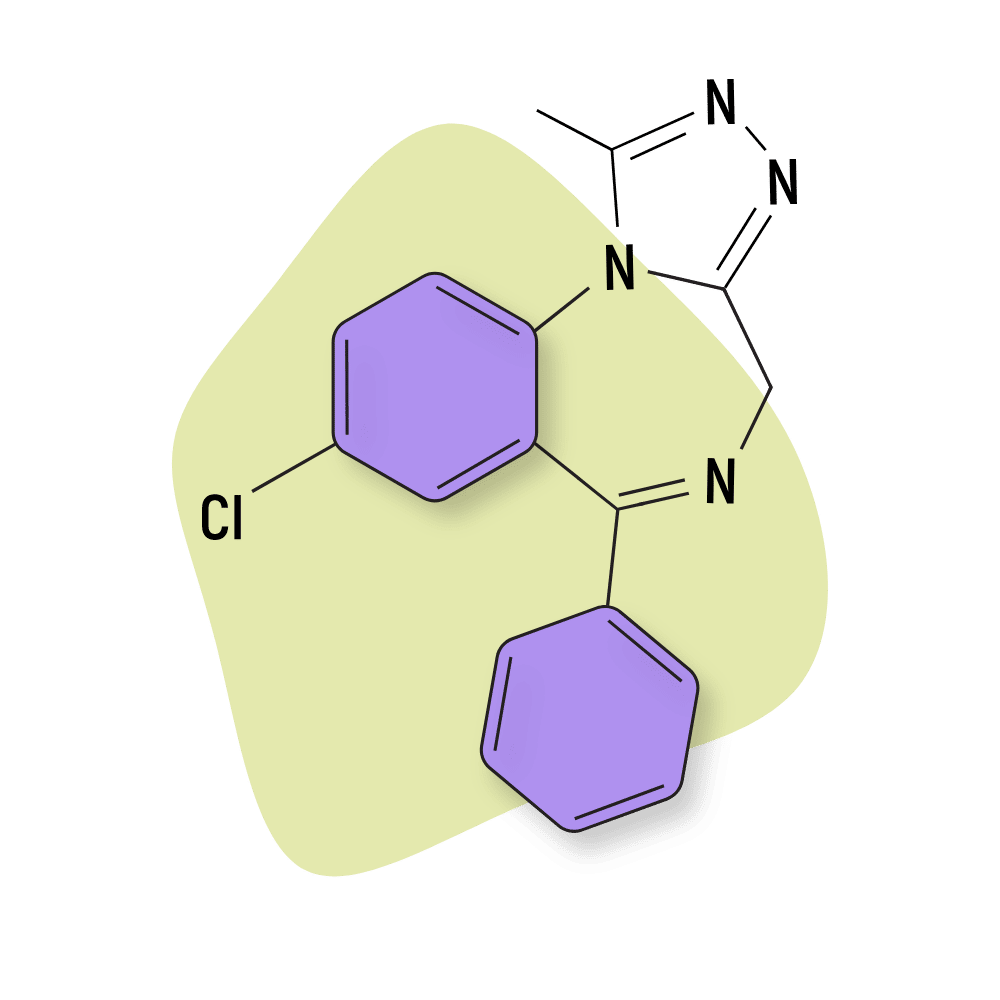
Alternatives to Benzodiazepines
Prescription benzodiazepine users have plenty of options to replace their prescriptions with a natural alternative. These usually have fewer side effects and are less likely to lead to addiction or significant long-term side effects.
Of course, the improved safety profile of GABAergic plants comes with the trade-off of being much less powerful and may not be strong enough for some individuals.
Kratom
The kratom plant is a tropical evergreen species from Southeast Asia that can produce stimulant, euphoric, anxiolytic, analgesic, and sedative benefits [5]. It is also quite safe to use when taken by itself in responsible amounts. However, since it acts on the body’s opioid receptors, when combined with CNS-depressant compounds like opioids or benzodiazepines, it can contribute to respiratory depression fatalities.
Kava
Like kratom, the kava plant is also a tropical plant species, but it doesn’t boast as many effects as the former. Kava is more of a specialized compound, effectively treating mild to moderate depression [6]. Nonetheless, kava does boast a unique property called reverse tolerance. Researchers are still trying to understand it, but instead of forming the regular type of tolerance, kava can become stronger with repeated use!

Flubromazolam FAQs
What is the protein-binding value of flubromazolam
Flubromazolam is 89% plasma protein-bound.
Is flubromazolam a controlled substance in the United States?
Flubromazolam is not a controlled substance at the federal level. However, individual states like Virginia have registered it as a Schedule I substance.
References
- Łukasik-Głębocka, M., Sommerfeld, K., Teżyk, A., Zielińska-Psuja, B., Panieński, P., & Żaba, C. (2016). Flubromazolam–A new life-threatening designer benzodiazepine. Clinical Toxicology, 54(1), 66-68.
- World Health Organization, Critical Review Report: FLUBROMAZOLAM, Expert Committee on Drug Dependence Forty-third Meeting. Geneva.
- Zawilska, J. B., & Wojcieszak, J. (2019). An expanding world of new psychoactive substances—designer benzodiazepines. Neurotoxicology, 73, 8-16.
- Andersson, M., & Kjellgren, A. (2017). The slippery slope of flubromazolam: experiences of a novel psychoactive benzodiazepine as discussed on a Swedish online forum. Nordic Studies on Alcohol and Drugs, 34(3), 217-229.
- Eastlack, S. C., Cornett, E. M., & Kaye, A. D. (2020). Kratom—Pharmacology, clinical implications, and outlook: a comprehensive review. Pain and therapy, 9(1), 55-69.
- Pittler, M. H., & Ernst, E. (2003). Kava extract for treating anxiety. Cochrane Depression, Anxiety and Neurosis Group. Cochrane Database Syst Rev, 3.


